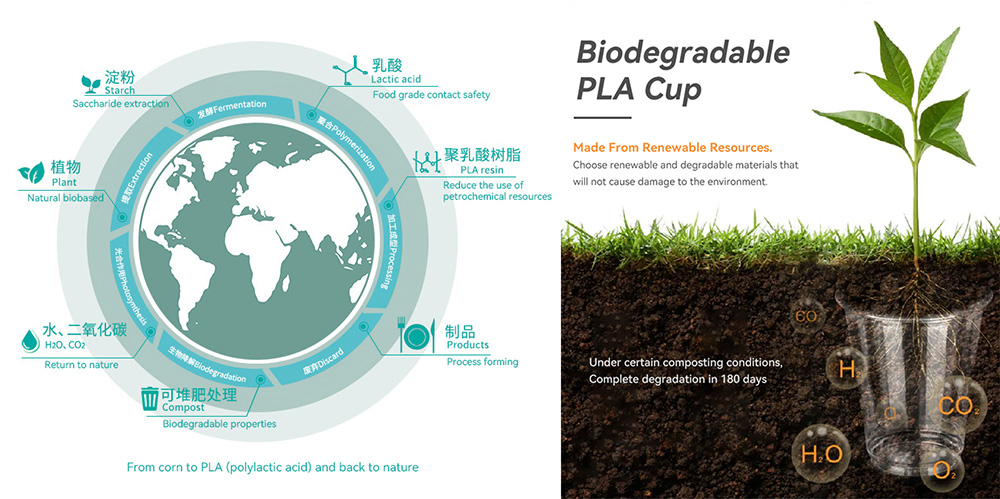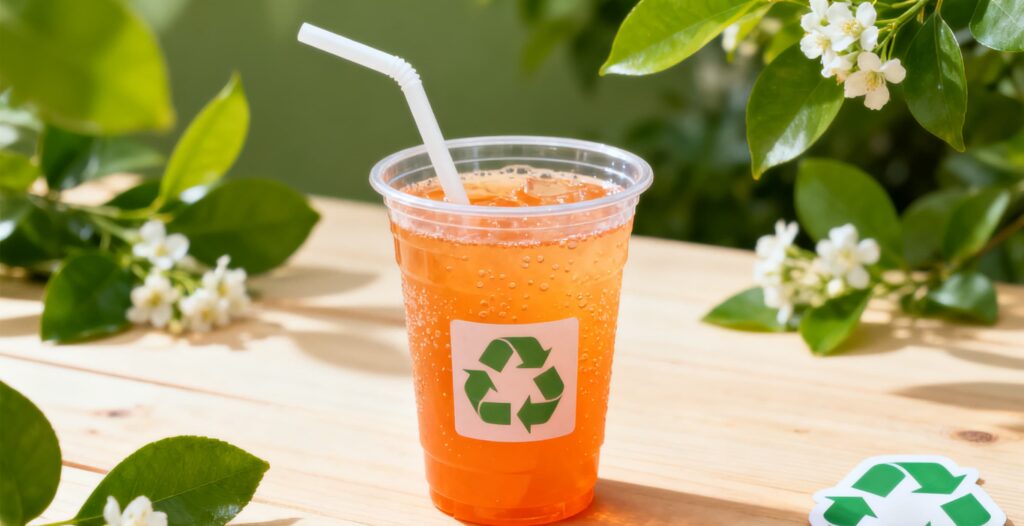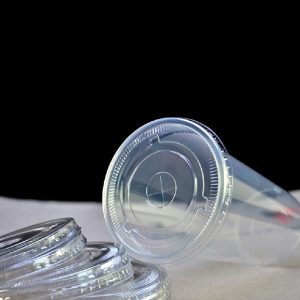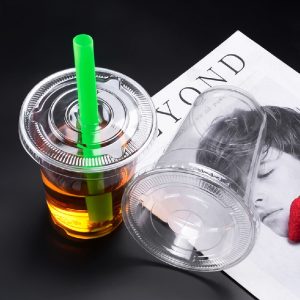Quick Summary
South Korea is increasingly adopting biodegradable PLA plastic cups as an eco-friendly solution to reduce plastic waste. With government support, rising consumer demand, and a shift toward sustainable packaging, PLA is set to become a staple in the country’s foodservice and beverage sectors.
Introduction: The Rise of PLA Packaging in South Korea
As sustainability becomes a key focus worldwide, countries like South Korea are actively seeking eco-friendly solutions for their packaging needs. Among the many materials being explored, Biodegradable PLA plastic cups have emerged as a popular alternative to traditional plastics. PLA (Polylactic Acid) is made from renewable resources such as cornstarch or sugarcane, offering a biodegradable solution to single-use plastics.
In this article, we will explore South Korea’s perspective on PLA materials for food packaging, focusing on biodegradable PLA plastic cups. We will look at the country’s regulatory landscape, consumer demand for eco-friendly options, and the growing adoption of PLA packaging in the foodservice and beverage industries.
Why PLA Packaging Is Gaining Popularity in South Korea
Environmental Concerns in South Korea
🌱 South Korea is one of the leading countries in the global movement towards sustainability. As the country faces increasing concerns over plastic waste and pollution, businesses and consumers alike are searching for environmentally friendly alternatives. Biodegradable PLA plastic cups are increasingly being recognized for their potential to reduce the environmental footprint of food packaging.
PLA is an attractive option because it is made from renewable resources, making it biodegradable and compostable under the right conditions. This makes it an eco-friendly alternative to traditional petroleum-based plastics, which contribute to long-lasting pollution.
Government Initiatives and Regulations
📜 South Korea has implemented various policies and regulations to reduce plastic waste and promote the use of eco-friendly materials. In 2018, the country introduced the National Strategy for Plastic Waste Management, which aimed to phase out single-use plastics and increase recycling rates. The government has also supported initiatives to introduce biodegradable alternatives such as PLA in the foodservice sector.
As part of the country’s commitment to sustainability, South Korea has been encouraging businesses to adopt PLA packaging for food and beverage products. This is in line with global efforts to reduce plastic pollution and create a circular economy.

Consumer Trends: The Shift Towards Eco-Friendly Packaging
Increased Consumer Awareness
🌍 South Korean consumers are increasingly aware of the environmental impact of packaging materials. As a result, many consumers are actively seeking out products packaged in eco-friendly materials such as PLA. According to a recent survey, over 60% of South Korean consumers said they prefer products with biodegradable packaging, and many are willing to pay more for sustainable packaging options.
The growing demand for biodegradable PLA plastic cups reflects this shift in consumer behavior. As more restaurants, cafes, and foodservice businesses begin offering PLA-based packaging, consumers are more likely to choose brands that align with their environmental values.
Adoption in the Foodservice Industry
🥤 The foodservice industry in South Korea has rapidly adopted PLA plastic cups due to their benefits in both sustainability and performance. PLA cups are durable, suitable for both hot and cold beverages, and can be molded into various shapes and sizes to fit different types of foodservice needs.
With increasing demand for takeout and delivery services, PLA plastic cups are being used for beverages such as iced coffee, smoothies, and bubble tea. Their biodegradable properties are especially appealing for businesses that want to minimize their environmental impact while still providing high-quality, functional packaging.

Advantages of Biodegradable PLA Plastic Cups
Sustainability Benefits
🌱 One of the main advantages of PLA plastic cups is their biodegradability. Unlike traditional plastic cups made from petroleum-based materials, PLA cups break down into natural elements such as water, carbon dioxide, and organic matter when composted in industrial composting environments. This helps to reduce the amount of plastic waste in landfills and oceans.
Moreover, the production of PLA from renewable sources like corn or sugarcane requires less energy than petroleum-based plastics, reducing the carbon footprint associated with manufacturing.
Versatility and Performance
🥤 PLA plastic cups are not only environmentally friendly but also highly functional. These cups can be used for both hot and cold beverages, making them ideal for a wide range of foodservice applications. They are also clear and visually appealing, allowing businesses to showcase their drinks and other products effectively.


Challenges in Adopting PLA Packaging in South Korea
Limitations in Composting Infrastructure
🚮 Despite the benefits of biodegradable PLA plastic cups, one of the main challenges in South Korea is the lack of widespread composting infrastructure. While PLA can biodegrade in the right conditions, such as industrial composting facilities, many regions lack the facilities required to properly process these materials.
Without proper composting infrastructure, PLA cups may still end up in landfills, where they do not break down as intended. This is an issue that South Korea’s government will need to address in order to fully realize the benefits of PLA packaging.
Higher Cost of PLA Materials
💰 Another challenge is the higher production cost of PLA compared to traditional plastic. PLA is generally more expensive to manufacture, which can be a barrier for some businesses, especially small foodservice providers. However, as demand for sustainable packaging increases and production scales up, the cost of PLA materials is expected to decrease.
Why PLA Is the Future of Sustainable Food Packaging in South Korea
📜 Despite the challenges, the future of biodegradable PLA plastic cups in South Korea looks promising. The growing consumer demand for sustainable packaging, government regulations promoting eco-friendly solutions, and the increasing adoption of PLA in the foodservice industry all point to the continued rise of PLA materials in the packaging market.
As South Korea works to improve composting infrastructure and reduce plastic waste, PLA will play an essential role in achieving a more sustainable and circular economy.
FAQ: Everything You Need to Know About Biodegradable PLA Plastic Cups in South Korea
Q1: What is PLA, and how is it different from regular plastic?
A1:PLA (Polylactic Acid) is a biodegradable plastic made from renewable resources like cornstarch or sugarcane. Unlike traditional plastics made from petroleum, PLA is biodegradable and compostable under the right conditions, making it a more eco-friendly alternative.
Q2: Are biodegradable PLA plastic cups safe for food and beverages?
A2:Yes, PLA plastic cups are safe for food and beverage use. They meet international food safety standards and can hold both hot and cold beverages without compromising their integrity.
Q3: Can PLA plastic cups be recycled?
A3:PLA plastic cups are not recyclable in the traditional sense. They require specific composting conditions to break down properly. Therefore, proper disposal and composting infrastructure are necessary for effective waste management.
Q4: How long do PLA plastic cups take to biodegrade?
A4:In industrial composting environments, PLA plastic cups can biodegrade within 1 to 3 months, depending on the temperature and humidity. However, in landfills or without proper composting, PLA can take much longer to break down.
Q5: Why is PLA packaging gaining popularity in South Korea?
A5:The popularity of PLA packaging in South Korea is driven by increasing consumer demand for sustainable options, government regulations pushing for eco-friendly materials, and the growing awareness of plastic waste issues.
Q6: Is PLA packaging expensive?
A6:Yes, PLA packaging can be more expensive than traditional plastic due to the higher costs of production and raw materials. However, as demand increases and production processes become more efficient, costs are expected to decrease over time.
Conclusion: The Future of PLA Packaging in South Korea
Biodegradable PLA plastic cups represent a sustainable solution for the foodservice industry in South Korea. While challenges such as composting infrastructure and cost remain, the growing consumer demand for eco-friendly packaging, government support, and the versatility of PLA make it an attractive option for businesses and consumers alike. As South Korea continues to strengthen its sustainability efforts, PLA packaging will play an essential role in the future of eco-friendly food packaging.
References
-
South Korea’s National Strategy for Plastic Waste Management. Available at: https://www.greenpak.or.kr
-
South Korea’s Environmental Protection Agency: Food Packaging Trends. Available at: https://www.environment.go.kr
-
Biodegradable Plastics and Sustainability: An Overview. Available at: https://www.sustainabilityjournal.com




